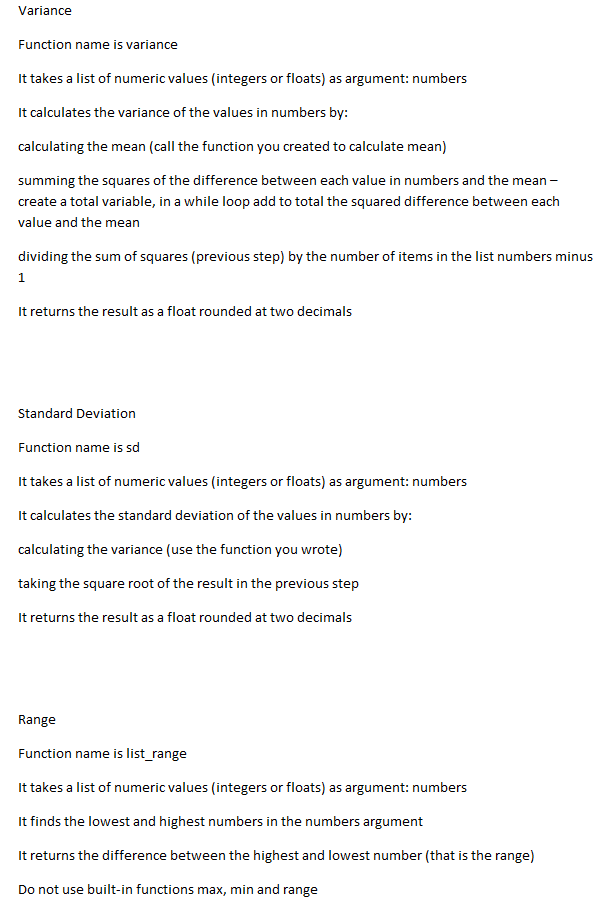Answered step by step
Verified Expert Solution
Question
1 Approved Answer
I already made the mean one: def mean(numbers): total = 0 index = 0 while(index total = total + numbers[index] / len(numbers) index += 1

I already made the mean one:
def mean(numbers):
total = 0
index = 0
while(index
total = total + numbers[index] / len(numbers)
index += 1
return total
having trouble plugging it in, Python 3 please.
Variance Function name is variance It takes a list of numeric values (integers or floats) as argument: numbers It calculates the variance of the values in numbers by: calculating the mean (call the function you created to calculate mean) summing the squares of the difference between each value in numbers and the meancreate a total variable, in a while loop add to total the squared difference between each value and the mean dividing the sum of squares (previous step) by the number of items in the list numbers minus 1 It returns the result as a float rounded at two decimals Standard Deviation Function name is sd It takes a list of numeric values (integers or floats) as argument: numbers It calculates the standard deviation of the values in numbers by: calculating the variance (use the function you wrote) taking the square root of the result in the previous step It returns the result as a float rounded at two decimals Range Function name is list_range It takes a list of numeric values (integers or floats) as argument: numbers It finds the lowest and highest numbers in the numbers argument It returns the difference between the highest and lowest number (that is the range) Do not use built-in functions max, min and rangeStep by Step Solution
There are 3 Steps involved in it
Step: 1

Get Instant Access to Expert-Tailored Solutions
See step-by-step solutions with expert insights and AI powered tools for academic success
Step: 2

Step: 3

Ace Your Homework with AI
Get the answers you need in no time with our AI-driven, step-by-step assistance
Get Started


